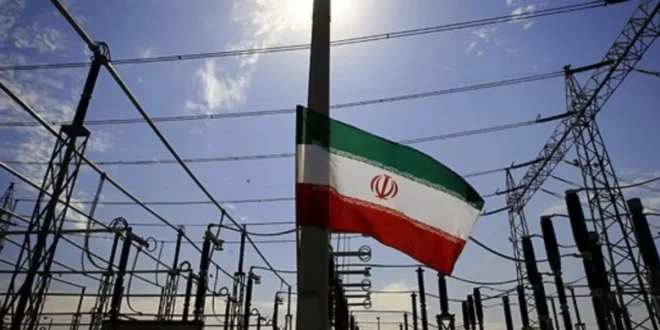An Iranian official has acknowledged that the country’s net electricity export has reached zero, due to internal power deficit.
Official statistics indicate that during the last three years, Iran’s electricity exports were plunging gradually, while imports increased.
Mohammad Elahdad, the Deputy for Transmission and Foreign Trade at the Energy Ministry, said on November 15 that now the net electricity export decreased to zero.
This marks the first time in decades that Iran’s electricity exports have equaled the country’s imports. Iran imports electricity from Armenia, Azerbaijan, and Turkmenistan while exporting to Iraq. On Saturday, Arash Kordi, the managing director of Iran’s electricity company Tavanir, claimed that the country is doubling the import of electricity from Turkmenistan.
Despite having net electricity exports of 8 terawatt-hours (TWh) a decade ago, this figure dropped to just over 1 TWh last year and has now reached zero.
The are reasons behind the decline in electricity exports. Domestic consumption increases at a high rate, because the government sells electricity at rock-bottom prices to consumers in a decades-old subsidy scheme. Inertia and fear of protests prevents the government from adjusting prices. Another major reason is the inefficiency of a government-controlled economy that breeds mismanagement and the expansion of the sector. Years of foreign sanctions have also played their role.
Over the past few years, Iran has struggled to meet its electricity generation growth targets, facing a shortfall of 14 megawatts (MW) during peak summer consumption.
Recent statistics from the Ministry of Energy indicate that only 20% of Iran’s electricity generation growth targets were achieved in the first seven months of this fiscal year, that started March 22.
On the other hand, a big part of newly launched power plants has very low efficiency. If this trend continues, the country is likely to become a net electricity importer in the coming years.
The Ministry of Energy has recently omitted the monthly reports on Iran’s electricity imports and exports, suggesting that the balance reaching zero is the reason behind this decision.

Iran, in exchange for importing electricity from Armenia, provides gas to this country (1 cubic meter of gas for every 3 kilowatts of electricity). However, for the imported electricity from Azerbaijan and Turkmenistan, Iran pays in currency.
The funds from Iran’s electricity exports to Iraq are deposited into an account at the Trade Bank of Iraq in dinars. Due to Iran’s limited imports from Iraq, approximately $10 billions of Iran’s earnings from electricity and gas exports to Iraq over the past few years were effectively blocked in the Trade Bank of Iraq.
Until the middle of this year, Iran was only allowed to use these funds for importing non-sanctioned goods from Iraq, but the US government has issued sanctions waivers, allowing the Islamic Republic to transfer these funds to Oman in euros for importing non-sanctioned goods from third countries. It is still unclear how long Iran will continue its electricity exports, given the severity of the country’s shortages.
For the current fiscal year (starting March 22), Iran had aimed to launch of over 5,000 megawatts of new power plants. However, in the first seven months (March-October), only 1,020 MW of power plants have been commissioned, with the majority being gas-powered plants with a modest efficiency of 30%. Iran has inaugurated only 33 MW of solar and wind power plants as well as 116 MW of relatively more efficient “combined cycle” power plants.
Although the country’s power generation capacity is 92,000 MW, the operational capacity of the national grid is only around 71,000 MW. This means that approximately 23% of the country’s power generation capacity is wasted due to aging and obsolescence.
Iranian authorities have repeatedly announced that the country faces a deficit of 14,000 MW during peak summer consumption.
Moreover, thermal power plants using mazut, diesel, and gas account for over 93% of Iran’s total electricity generation. About three-quarters of Iran’s thermal power plants are gas or steam-based, with a very low efficiency rate of around 30%. Iran had targeted converting these power plants to “combined-cycle” types with 45% efficiency for two decades ago but has not succeeded in this endeavor. The reasons include economic mismanagement and inefficiency coupled with various types of foreign sanctions.
Additionally, based on statistics from the Ministry of Energy and the Research Center of the Parliament, about 13% of the country’s generated electricity is lost in the aged transmission and distribution network.
In comparison, Iran, only in the transmission and distribution network, loses as much electricity as half of the country’s household consumption. The amount of electricity loss in the country’s aged network is approximately 48 TWh annually.
Dr Umud Shokri, Energy Strategist and Senior Visiting Fellow at George Mason University
Dalga Khatinoglu, Azerbaijani expert on Iran’s energy issues





